
We may earn revenue from product links on this page and participate in affiliate programs. Learn More ›

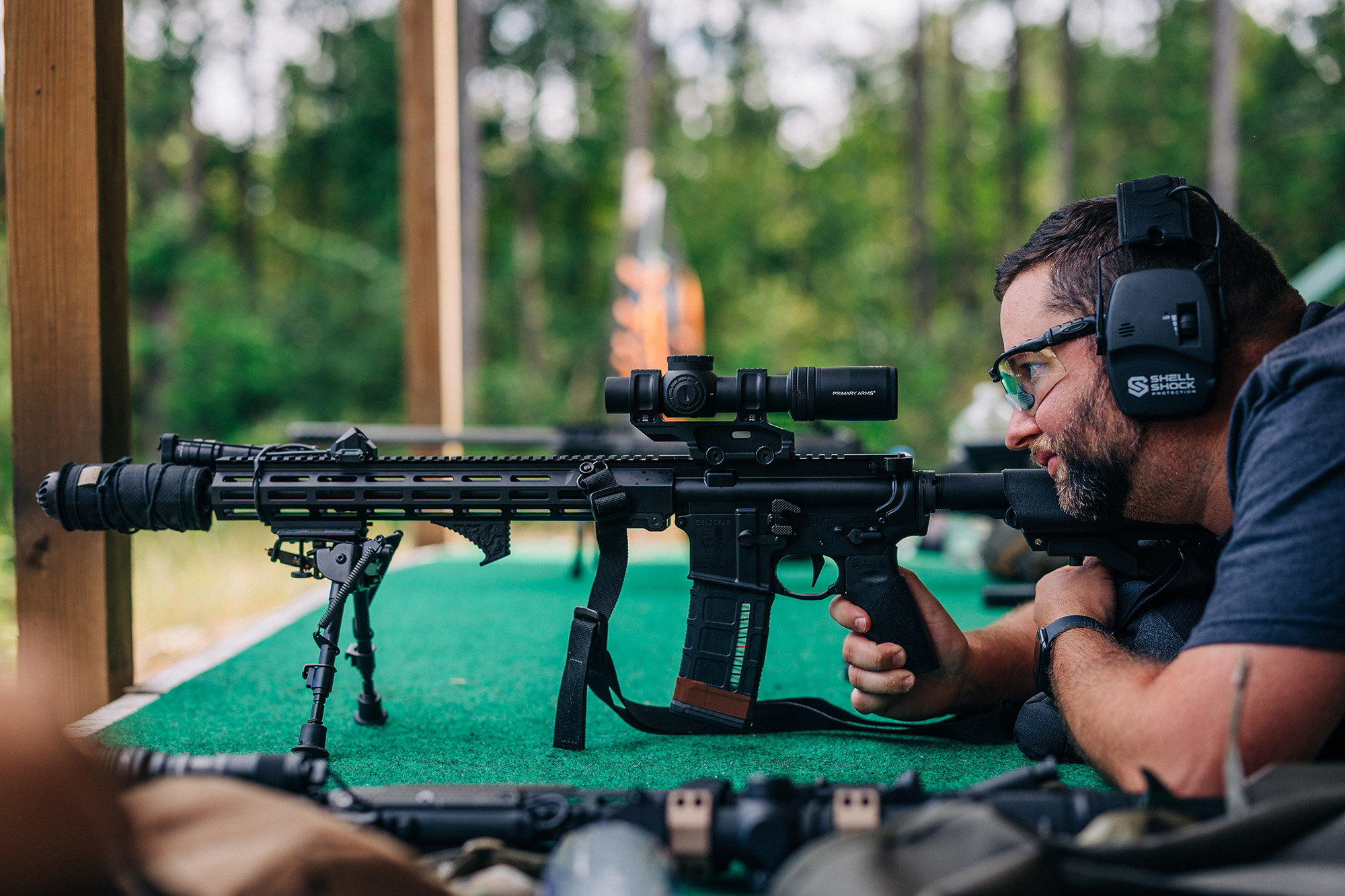
We may earn revenue from product links on this page and participate in affiliate programs. Learn More ›
Are you in the market for an LPVO and looking for the best value for your money? If you’re unsure where to begin, don’t worry – we’re here to assist you in making a well-informed LPVO investment.
We will start with the basics and cover some of the best LPVOs on the market today.
LPVO stands for Low Power Variable Optic and typically has a very distinct look with a larger ocular lens and eyepiece and a narrow objective lens.
This unique look doesn’t truly explain what makes them different so let us dive in a bit more.
Typically, LPVOs have magnification between 1-8x, with 4x,6, and 8x being the most common.
The purpose of the LPVO magnification would be to achieve a greater, more accurate, shooting distance.
Many companies making LPVO’s didn’t focus on making the magnification super powerful but rather found the balance between good magnification and solid eye relief.
Eye relief is a big deal on LPVO’s and the reason is the LPVO’s were created to be the go-between of a red dot sight and a full-blown scope.
The LPVO is meant to give you good eye relief and fast target acquisition of a red dot sight while giving you the magnification of a full-blown scope.
The eye relief is really what puts the LPVOs in their own little niche.
Most LPVO’s don’t come with a mounting solution and while some do you may want to upgrade it down the road to get more advanced features from your mount like QD and side-mounted optics.
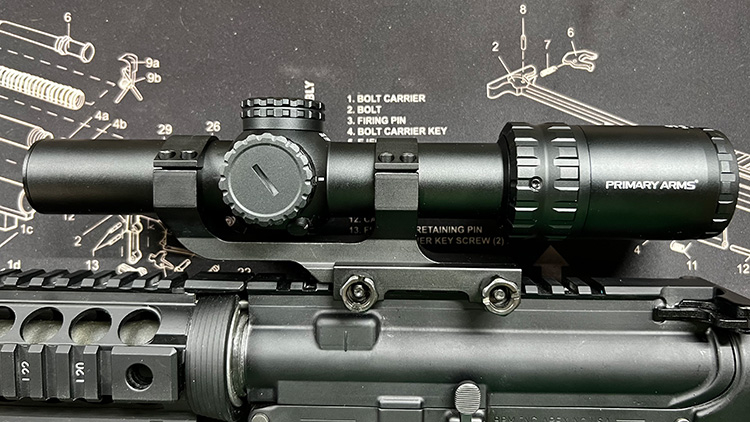
I have done a complete similar article on the best LPVO mounts available.
Why should you pick an LPVO over any other regular optic, including a red dot sight?
The answer is simple: you need magnification and fast target acquisition.
Many 3-gun competitors have transitioned to the LPVO world and haven’t looked back. The slight magnification gives them more reach and the eye relief is only slightly worse than some red dot sight options on the market today.
An LPVO is an excellent option for sub-500-yard hunting as well. I personally plan to put an LPVO on my Sig Tread .308 rifle.
The LPVO is also great for close quarters and fast-moving targets, making it great for nearly any application. It is a scope that really adds versatility to your carbines and AR-15 rifles.
If you’re on a budget that doesn’t mean the LPVO game isn’t for you! There are some really great LPVO options out there for you even if you don’t have a ton of money to drop on your optic.
I will always say we will never recommend any product based on price alone it will have to hold its own for it to get a recommendation here on Lynx Defense.
Time to take a look at two of the best budget LPVO options. The budget LPVO will range from $100-$300.
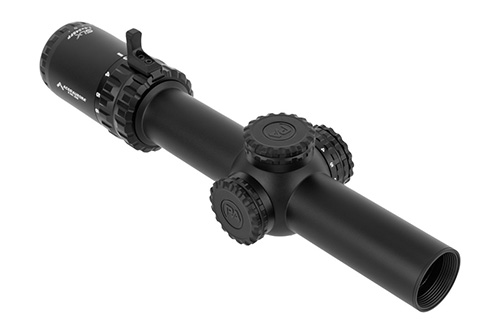
Primary Arms LPVO’s have made a splash in recent years due to their high-quality construction, solid price, and reputable company.
Primary Arms is an online retailer that in recent years has made its own branded optics and has really done a bang-up job. We have reviewed a number of the Primary Arms red dot sights, like the Primary Arms SLx 1X MicroPrism, and while we haven’t gotten to an individual review of the LPVO’s we will very soon!
This LPVO has a solid aluminum body construction and has all the bells and whistles of a red dot sight.
With an illuminated BDS reticle, you can’t go wrong. The ACSS 5.56/5.45/.308 reticle is one of my favorite reticles in an LPVO and looks like this:

At just under $300 this LPVO is extremely affordable and is likely to be the best budget LPVO for the money. You can also check out the Primary Arms Classic Series 1-6x24mm or the Primary Arms PLx 1-8×24 which is their premium scope series.
If you want a bit more magnification, you could go for the Primary Arms SLx 1-10×28.


The Monstrum brand is quickly becoming one of my favorites as they continue to release new and innovative optics.
Recently, Brad dived the Monstrum 1-3 LPVO and he did a full writeup on his experience with it.
While our verdict is in on the 1-3, we think Monstrum is a contender, and their 1-8x powered optics are much more likely to fit the bill.
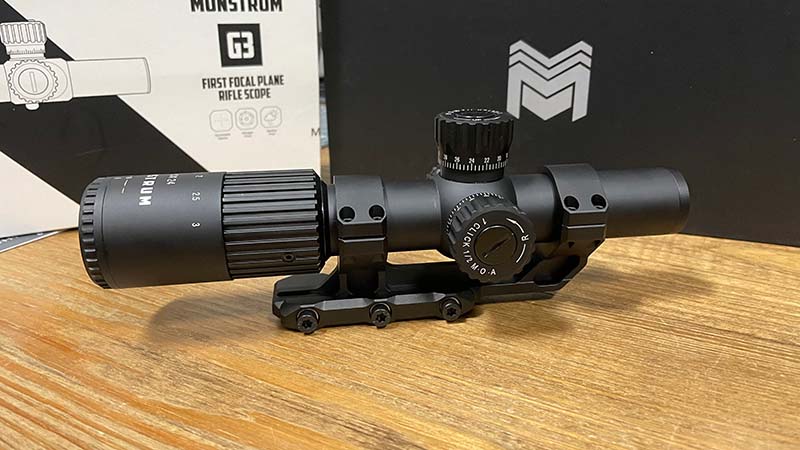
As you can see they are excellently crafted optics and should be considered in your decision-making process.
The best way to decide is to get your hands on one and decide for yourself.
The reticle is what Monstrum calls the Type-C reticle, which is an interesting design and one I’m not crazy about.
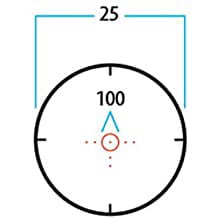
The Monstrum 1-6×24 LPVO comes in at just $149 as of this writing and is extremely budget-friendly. This LPVO comes in lower than some mid-range red dot sights.
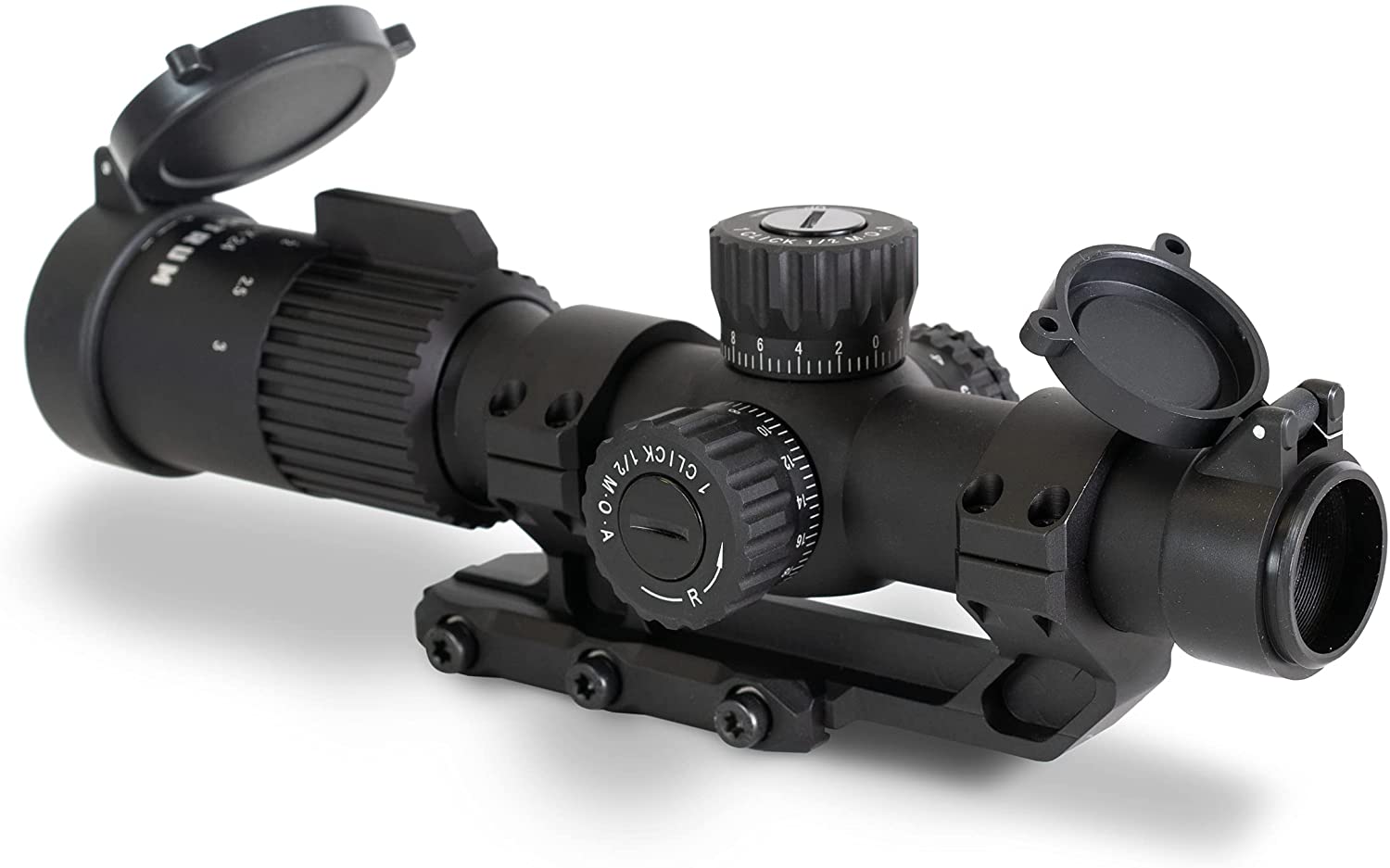
The midrange category is a bit of an odd duck. I like these optics the best because it’s where most people will want to be.
Not top-of-the-line but not the bottom of the barrel either. You’ll notice some familiar company names in this section and you can expect the midrange prices to be between $300-$500.
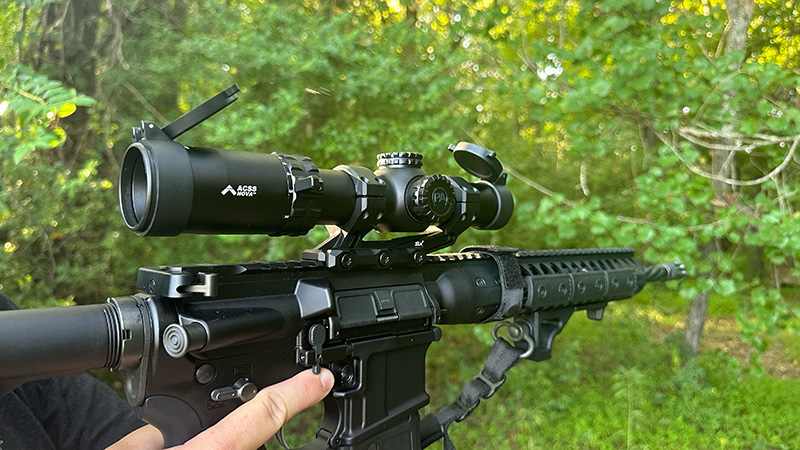
New for 2024 the SLx 1-10×24 SFP has found a new home on my LWRC M6IC for a number of reasons.
First, the Nova Fiber Wire Reticle is not just a gimmick it’s a fantastic red dot bright reticle.
This feature can be easily overlooked but it allows you to have an LPVO with magnification and a red dot sight all in one.
Keep the scope at 1x power, turn on your fiber wire reticle and boom — red dot sight.
The eye relief is good for a 10x SFP scope and extremely easy to dial in the optic.
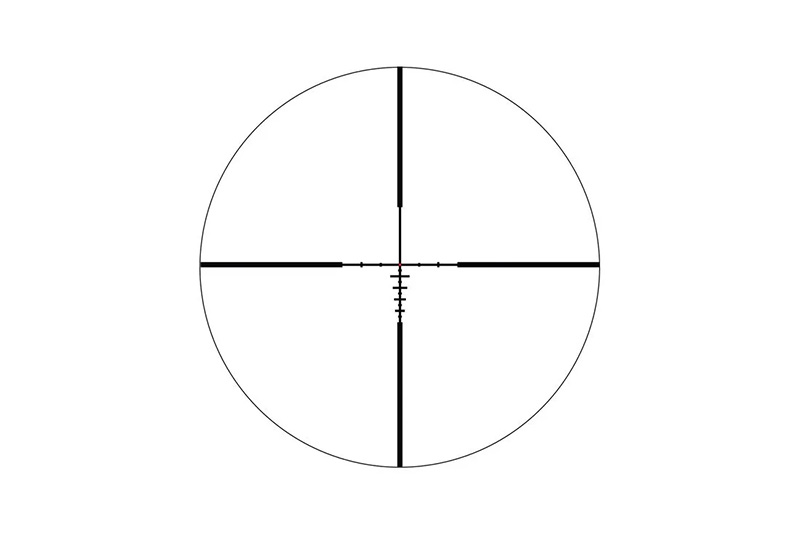
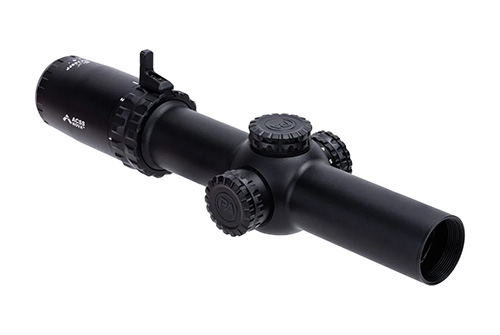

Primary Arms is at it again! With their Primary Arms SLx 1-8 you get the impeccable quality you are used to from Primary Arms optics and 2x more power than the 1-6.
Now keep in mind the price does jump up from the 1-6 to the 1-8 power but if magnification was your goal the clear answer is to step up to the 1-8x.
Once again the ACSS reticle is a huge plus and is a fantastic reticle for quick target acquisition and ranging.

Personally, I don’t think you can go wrong with a PA LPVO. It’s one of the best in the mid-range options and probably one of the best bang for your bucks as of this writing.
One of the only real structural differences in the 1-8x is that it does weigh 10 oz more than the 1-6x.

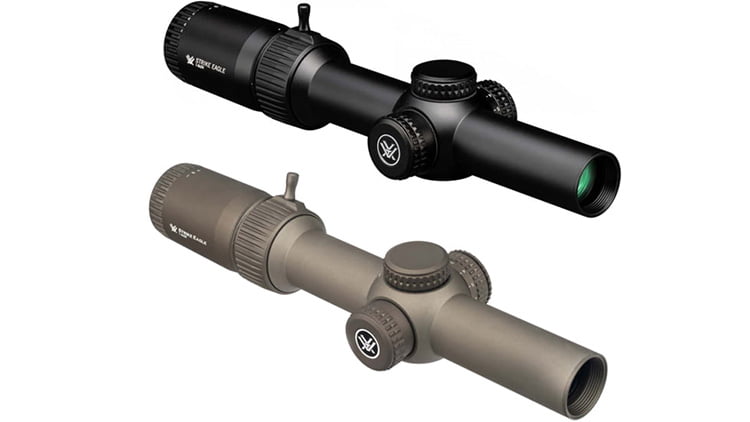
The Vortex Strike Eagle is one of the most well-known LPVOs.
I have owned almost every generation of the Strike Eagle, and while each has been better than the previous generation, I’ve loved each one.
There are several different reticle options, including the BDC3 and BDC4.
With a fantastic price point of $399 and an amazing lifetime transferable warranty, these optics are among the best midrange optics on the market.
While the eye relief isn’t nearly as good as the Vortex Razor the price is 3x less.
We did a complete review of the Vortex Strike Eagle, which faired extremely well in our testing and use.

There is no doubt that everyone who buys anything would prefer the high-end option, scopes are no different.
The high-end LPVOs offer better eye relief and typically more magnification. These optics typically have all the bells and whistles and feature maximum clarity under magnification.
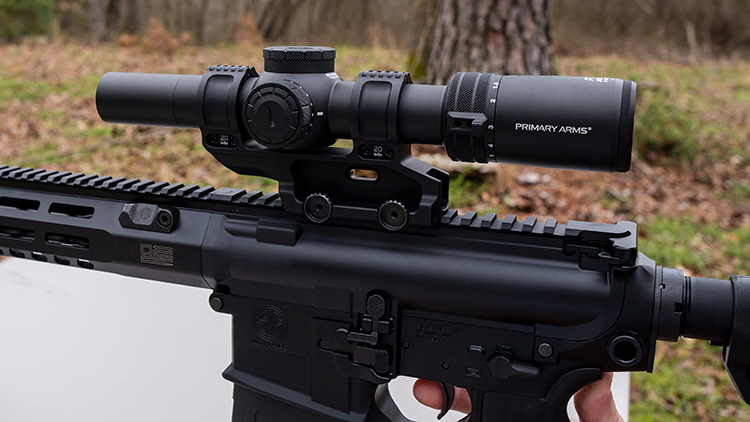
One of my new favorites is the Primary Arms PLx 1-8×24. Its higher-than-normal price point puts it more in the high-end scope region.
The Raptor M8 reticle is fantastic, and I love the First Focal Plane optic in an LPVO.
If you have about $1,500 to throw down, this Japanese glass by Primary Arms is where it’s at and I cannot recommend it enough.
The scope comes with a removable hood that allows you to help with glare and sun on the lens.
It also has massive turrets that make adjustment easy and quick; I really appreciate the texturing on the turrets because it makes them very easy to adjust.


The Vortex Razor has long held the creme of the crop rating and is currently being challenged for that position.
The Razor has two different reticle options including the EBR-9 (MRAD) Reticle and the EBR-9 (MOA) Reticle.
The biggest difference between the razor and other high-end options is the fact that it’s a 1-10x optic.
That’s an incredible feature for such a small package and one that cannot be overlooked.
The eye relief on the Razor series is fantastic and is often the gold standard of eye relief and it looks amazing.


The EOTech Vudu is one of the newer offers from EOTech and one of their first dips in the magnified optic waters (as long as you don’t count red dot magnifiers).
If you are into Podcasts I highly recommend the Q Podcast with Aaron Hampton with EOTech talks a lot about the Vudu series of optics.
I’m a big fan of the EOTech holographic weapon sights, so naturally, I want to show Vudu some love. They are a great product for the money.
The Vudu is an extremely impressive low-power variable optic because the performance for the price is incredible.
The Vudu lineup offers everything from 1-6x to 1-10x and keeps the MSRP under $2,000!
That’s right… a 1-10x LPVO for under $2,000! That’s incredible by itself not to mention it comes from a top-tier optics company like EOTech.


Nightforce is known as one of the top-tier optic manufacturers of optics in the world. They are famously Made in the USA and carry a famously hefty price tag.
These are quality optics and should command a high price point.
You won’t likely buy the ATACR low-power variable optic if you read this because I said it was the best. But if you are, you’re the bomb and that’s awesome.
The reason I say if you are buying the ATACR you likely aren’t buying it because of this article is it’s nearly $3,000 and most people who are buying a $3,000 LPVO already know it’s the best.
The Nightforce ATACR is a fantastic optic with some of the best combinations of magnification and eye relief on the market.

The best is used often, even in this article, but it’s an extremely subjective term. But best with a qualifier, like best for the money, is a much easier bar to measure.
Here is my current best choice for the money LPVO.

As of this writing, the Sig Sauer Tango MSR LPVO 1-6x24mm is the best LPVO for the money.
This low-power variable optic is such a bang for your buck because it comes with a mount included. A lot of these options don’t include a mount which makes them even more expensive as mounts are between $40-400.
The reticle on this Tango MSR is the DBC6 reticle pictured below.

While the magnification one the Tango MSR isn’t as good as some of the other options above the sub-$300 price point it comes in at makes it the best bang for your buck in the low power variable optic space.

If you are ready to upgrade from just an LPVO, consider the best thermal optics for your latest gun.
LPVO stands for Low Power Variable Optic. They usually magnify between 1-10X and have better eye relief than regular scopes.
Durability depends on several factors. Mainly the construction of the LPVO and the material that is used.
Most LPVOs are as durable as regular traditional scopes, but some are more durable depending on the application.
I stick to sub-500 yards with an LPVO but they are great for anything sub-1000 yards.
While yardage is subject and your mileage may vary depending on your magnification, it’s safe to say if you are going beyond 1000 yards it’s time to look for a solid scope.
Never a mention of bushnell.
The trophy QA 1-6 has been great
Followed your advice and just ordered a Sig Sauer Tango. But it now comes in 1-8x and 1-10x!!! Given that it is going on a Christensen Arms CA-10 in 6.5 Creedmoor, and accuracy was the main selling point for me, I went ahead with the SIG SAUER Tango-MSR LPVO 1-10X28mm 34mm Tube F2/SFP MSR BDC-10, $579.99 on Amazon. Wish I could have linked it to your website, which I just came across, and which has been very helpful in my research.
What do you think of Delta Stryker HD? It should be on your list as it has a good price and Japanese made glass.
Good list, but no mention of Swampfox? Seriously love their lpvo lineup. Definitely worth a shot if you get the chance. Cheers!
Funny you mention Swampfox! I have been eyeing their stuff hard lately don’t be surprised to see this listed updated soon.
Would you consider the mid range PA solution to be better than say their MD25 red dot and one of their 6x swing away multipliers? Trying to understand pros an cons for a Home Defence AR15 in a country type neighborhood
Good morning I respectively have to disagree with you regarding the mid range offerings. I consider mid range the Vortx PST Gen 2 for example. You can find them on sale anywhere between 499 and 599 he completely out do
The above mentioned.
Check out the LVPO offering from Monstrum. Banshee.
I have the Vortex Razor HD Gen 3 and would like to edit your data. It has a 34mm tube not a 30mm tube. Also after checking the Nightforce ATACR 1-8X24 it to has a 34mm tube. Didn’t check any of the other LPVO’s but after these two I think you should.
You are correct! Rechecked them and updated the data typos. My apologies and thanks for the catch! How do you like your Razor?